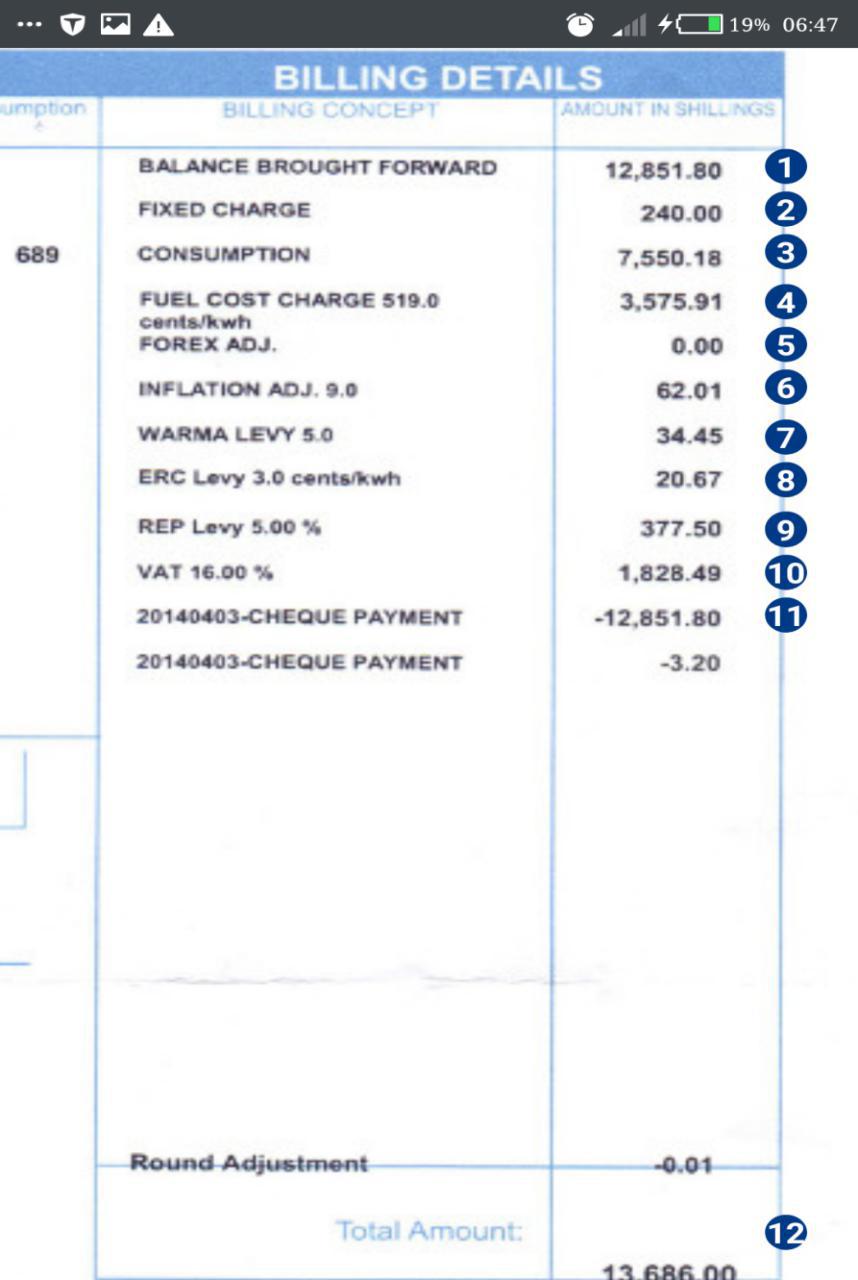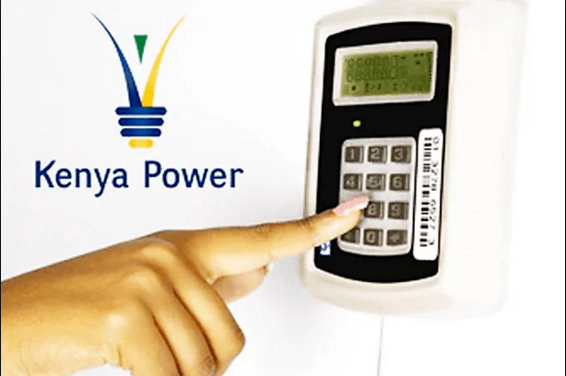Following recent (almost constant) uproar by consumers over Kenya Power billing, we decided to cover the billing structure. This will help demystify the billing system for customers who feel their bills are being inflated because they are not conversant with Kenya Power’s billing mechanisms. After all, when you pay bills you don’t understand, you feel dragged back to the dark days of slavery and subjugation.
First and foremost, basic energy pricing is based on tariffs set by the Energy Regulatory Commission (ERC). Contrary to common belief, the billing system and rates for pre-paid and post-paid users is the same. A Kenya Power bill is broken down into the basic structure shown here:

- Balance brought forward– As the tag suggests, this is the arrears on the meter according to the previous bill
- Fixed Charge-This is the standard charge towards footing costs incurred in the distribution, vending and billing process. These costs include installation, maintenance and other customer service carried out by KPLC. The current fixed charge for a domestic consumer is Ksh150.
- Consumption-Cost of electricity utilized by the user over the month. Here, is the section of billing that is a puzzle for most. The basic principle of consumption billing is the heavier your usage, the higher your bill. Other than consumption rate, there are other variants to consumption billing I.e. type of consumer, time of token purchase/energy use (peak/off-peak) and some surcharges in form of levies to various regulatory bodies & affiliates. As of March 2018 a domestic user was charged a basic consumption charge of Ksh2.50 for the first 50Units (KWh). As consumption exceeds 50Units (up to 1500KWh), the charge rises to 12.75/KWh. Consumption exceeding 1500KWh is deemed heavy and charged at Ksh20.57 per unit. Additional charges factored in to determine the net consumption charge as of March 2018 were:
- Fuel Cost Charge(FCC)-Ksh5.35/KWh (Reflects cost of fuel based electricity generation incurred by Kengen or other Independent Power Producers)
- Foreign Exchange Rate Fluctuation Adjustment (FERFA)-Ksh3.12/KWh(Sum of foreign costs incurred by various service providers)
- Inflation Adjustment (IA) – Ksh0.42/KWh (A cost pegged on a relation between domestic and international costs of supplying.)
- Water And Resources Management Authority (WARMA) levy-Ksh0.01/KWh(Pegged on the amount of hydro generated electricity)
- Energy Regulatory Commission levy (ERC)-Ksh0.03/KWh tariff charge.
- REP levy-Ksh0.64/KWh(0.5% of the basic charge of consumption)
To determine the net charge, the above levies are added to the basic consumption charge and a VAT of 16% is imposed on the amount (WARMA, ERC and REP levies are exempt). An important resource for detailed info on billing is https://stima.regulusweb.com/
- Fuel cost charge-The amount charged to foot costs incurred in thermal generation of electricity, a process that utilizes fossil fuels. During times of drought, a fluctuation in hydroelectric production results in higher charges.
In addition to these, “cheque payment” indicates the last amount that the customer for this account paid by cheque. In addition, the total charge may be rounded off to give an adjusted bill.
With all this information, a major question arises; how does this billing apply in day to day consumption and purchases? We discuss this in the next article.



